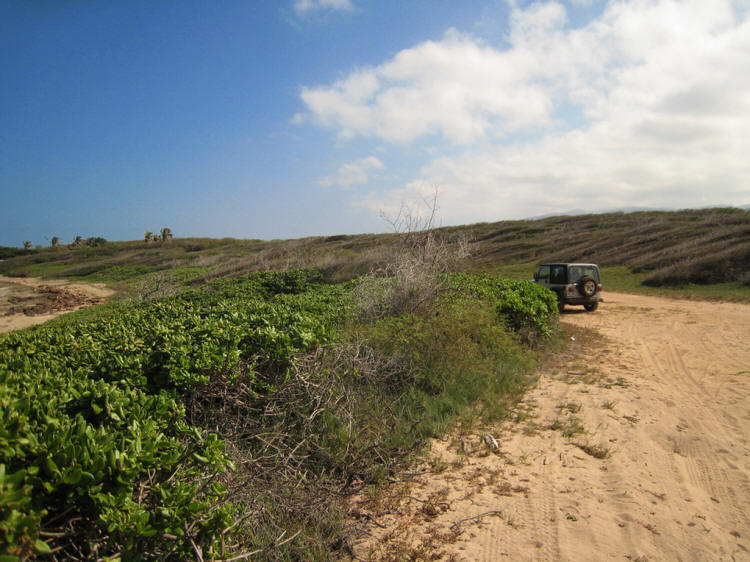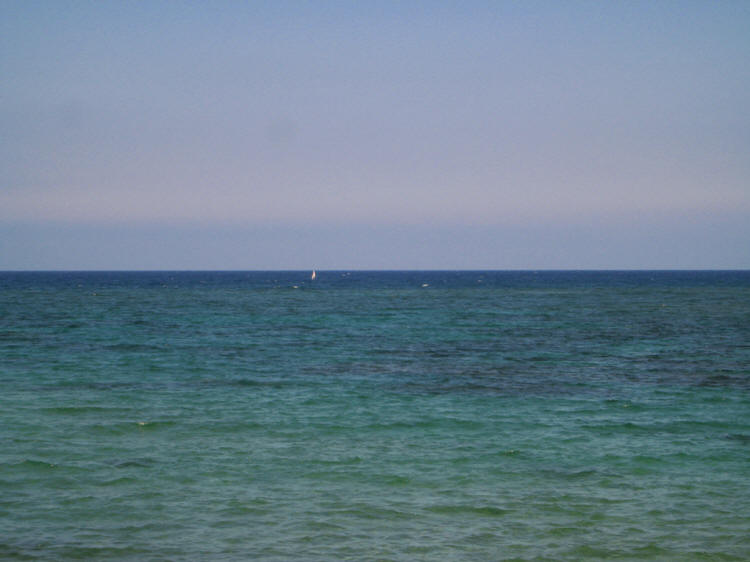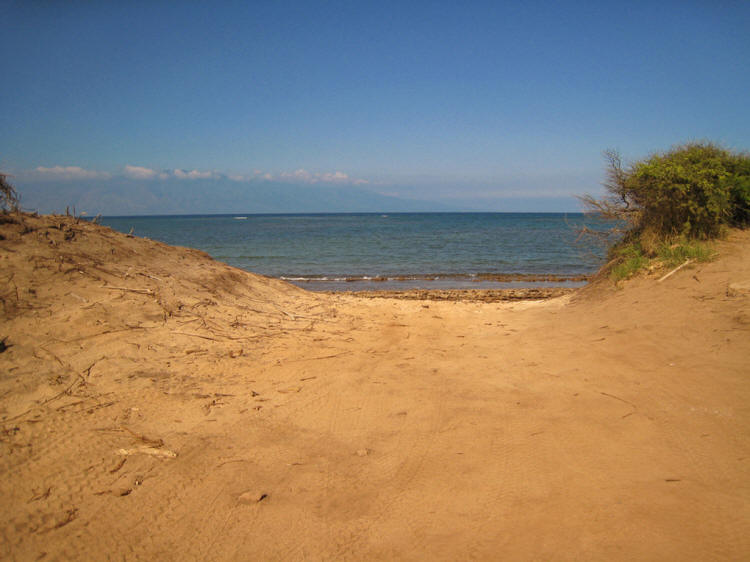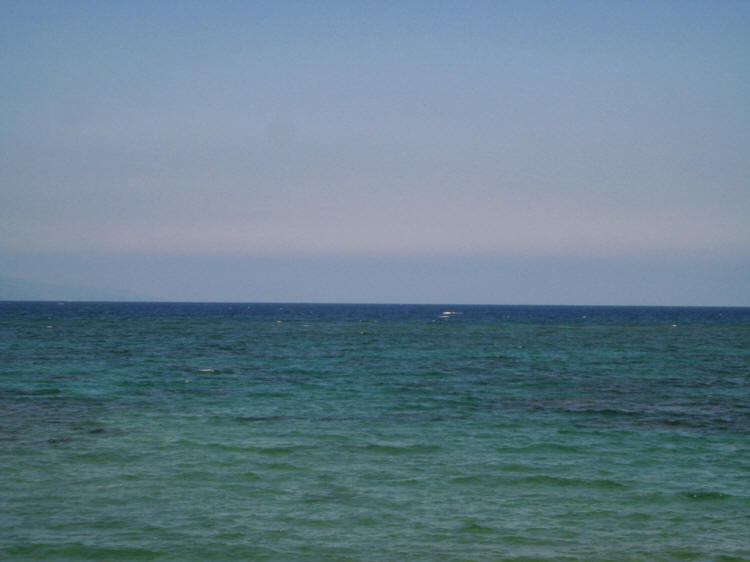| Previous: Experience At Koele | Next: Lanai Virtual Tour |
Shipwreck Beach
Another adventure gives us a day off between two days of golf!
Although unsafe for swimming, wild and beautiful Shipwreck Beach remains a favorite stop among many visitors to Lanai, "Hawaii’s Most Exclusive Island." Beachcombers come for the brilliant shells and other treasures that wash up on shore. Amateur and professional photographers alike thrill at the magnificent views of neighboring Molokai, which rises across the Kalohi Channel. And the beach’s eight-mile stretch of sand offers a great spot for sunbathing, picnicking, fishing, walking and exploring.
The Kalohi Channel is known for having powerful currents and numerous reefs, and many ships have met their watery demise here—hence, the name "Shipwreck Beach." The first documented shipwreck occurred in 1824 when a British vessel, Alderman Wood, met its fate. Just two years later, an American ship, London, sunk here. The London was said to be carrying a large cargo of gold and silver, and it is uncertain how much was ever recovered.
Perhaps the most famous resident at Shipwreck Beach is the World War II Liberty Ship, whose rusted hulk still clings to a reef near the shore. This was not the result of an accident. After World War II, this vessel was given "residence" as an economical means of disposal. Made of concrete, the ship was one of 22 ferrous-concrete oilers built between 1942 and 1944. None of these vessels were given names.
Located along the northeastern coastline of Lanai, Shipwreck Beach is accessible by 4WD vehicle. From Lanai City, take Highway 44 to the end of the road, then turn left on the dirt road to the parking area near the lighthouse ruins. The beach fronts the ruins and stretches for several miles.

The sand gets a little soft so one must be careful when driving or one will
be buried!

Look close and you will see whales
Yes, those are whales jumping in the water off the beach! Sometime around December, the endangered humpback whales start arriving from Alaska. In all, approximately 5,000 will visit our Hawaiian waters each year. While they're here, they breed, birth and raise their young. It's interesting to note that the calves are the only ones who eat while they're in our warm waters, and they nurse, gaining over 100 pounds of weight per day. After the calves fatten up, they all start departing around April. It takes, on average, a month for the journey to and from Hawaii. In this whale watching expedition, they have no destination in mind other than where the whales are. At 45 tons, give or take a ton, they pretty much go wherever they like. Scientists figure they like the warm, near-shore waters for birthing and raising their young, because it's considerably safer from their main predator—the killer whale—which rarely visits this far south. You will likely to watch the whales tail slap, pec slap, fluke up dive, spy hop and, of course, breach.
There Must Have Been Hundred's Of Whales Breaching In The Bauy

We sat for an hour watching the entertainment






